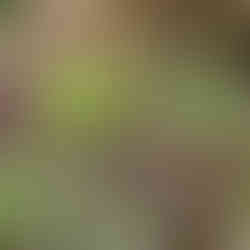May 2021
- Carolyn Thompson

- Jul 11, 2021
- 4 min read
The swallows have returned. It is a delight to see and hear them heralding the promise of warmer days and the coming spring. The barns are alive with their chattering and busy with their nest building. They fly in and out of the buildings gathering grass, mud, hair and feathers to mend old nests and create new ones. Amazing to have that much energy after flying thousands of miles across land and sea. In many cultures swallows are believed to bring happiness and luck to a household. Did you know that swallows are a popular choice of tattoo for sailors? I did not, but it makes sense as a symbol of their experience in sailing and their ability to travel thousands of miles across seas. It is also believed that a swallow tattoo will increase the chance of returning home safely based on the fact of swallows always returning to the same place. (richardalois.com in ‘Swallow Symbolism). I also learnt that owls are predators of swallows and they do not coexist happily with each other. I must tell the swallows and the white owl living side by side in our barns.
Aristotle wrote, ‘one swallow does not make a spring, nor does one fine day’. I think we can all agree he was a bit of a fun sponge but in 2021 he has been proved correct. In spite of the swallows lifting our spirits, the weather did the opposite. May inherited a parched landscape from a rainless April with bitter winds and frosts. The leaves on the trees had either shrivelled up or never appeared. May was not kind to us, it brought constant rainfall, making it the fourth wettest May since 1862, (MET Office). It was cold, with early morning frosts well into the second week. Looking through the daily weather reports a pattern emerges of repeated phrases: strong winds, hail and thunder, bands of rain, landslides, floods, more rain, more thunder – especially in the south west. After more than a year of covid, we all felt the lack of warmth from the sun, it was a tough month.
The white owl however, cared nothing about such things. It makes its presence felt on a daily basis, not only in its fly-by the kitchen window at night but also by the dead rabbits left in the open field – much to the delight of the dogs on their early morning walk. I’m assuming it’s the kill from the owl, (or a buzzard?), other possibilities are more worrying; crazed rabbit killers who come out at night to wreak havoc on the rabbit population? (Believe me, I have thought about it). The voles and moles have escaped death for the most part. Many voles can be seen darting across the field and the work of the moles can be seen in the earth piles strewn across the field and garden, indicating a very healthy population. In contrast the trees have not fared so well. The hedges are full of mature trees without leaves, the ash in particular has remained skeletal. In the orchard the blossom on the fruit trees came and disappeared very quickly, the winds sweeping all flowers away in one overnight storm. All the fresh, bright leaves that emerged on the young trees in late March and April, turned brown, shrivelled up and left the trees. I hope they will recover. The few areas of lush growth and promise came via the ferns, the campions and the foxgloves. The latter two bursting forth on the scene and dominating the hedges and verges, splashing pinks of all shades and strengths. Shadier ground offered ferns of all shapes, a place to grow and flourish.
According to Nuttal in his 1912 book on wild flowers, foxgloves are a, ‘bee flower…its whole existence is run on lines to meet and please the honey bee’ but in addition to this, ‘a single foxglove plant will provide from one to two million seeds to ensure posterity’. It has certainly achieved that around here. The active ingredient in the foxglove is called digitalis and its value as a treatment for the heart has been well documented since the 1700s. It was also used for the treatment of epilepsy and here’s a piece of useless information for you. Vincent Van Gogh used digitalis to help cure his epilepsy. One of the side effects of the drug is yellow vision. (I think we all know where this is going). It’s believed that this yellow vision influenced Van Gogh’s art and was the reason he so often selected the colour yellow for his paintings. Alas, I cannot take credit for this nugget of information, ‘harvesting-history.com’ is responsible.
There are many local names attributed to the foxglove, its spike of purple and pink flowers shaped like bells offering room for imagination. One explanation from Nuttal is that the, ‘fox’ is most likely from ’folks’ ie fairies and that it is derived from ‘folk’s gleown; a gleown meaning a peal of bells… the flowers lending themselves to the suggestion of fairy music’. I’m up for the idea of sharing the field with the fairy folk playing their music and on that note I will leave the month of May.







Comments